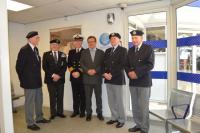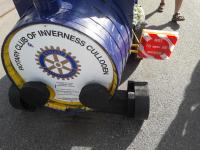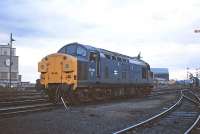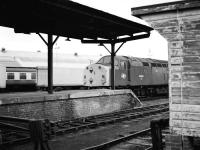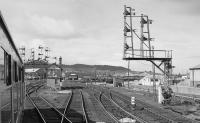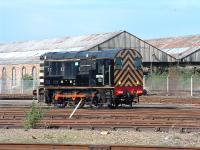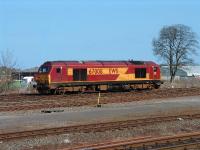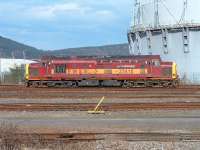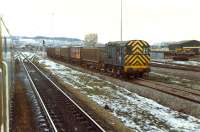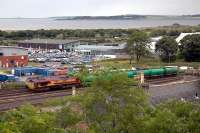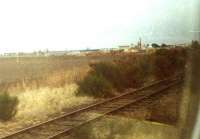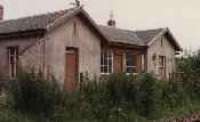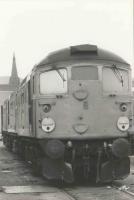Inverness and Nairn Railway
Introduction
This line is open. Passenger services are provided by ScotRail from Inverness to Aberdeen. Stations remain open at Inverness and Nairn. This line was extended east by the Inverness and Aberdeen Junction Railway to meet the Great North of Scotland Railway at Keith.
The original termini at Inverness and Nairn are still in use, the former greatly expanded and the later with an end-on junction at its east end.
The line is largely single track, but it was doubled from Inverness as far east as Dalcross and singled around 1967.
Dates
Portions of line and locations
This line is divided into a number of portions.
Inverness to Nairn
This is a seven platform terminus for services to and from locations to the south such as Glasgow Queen Street High Level, Edinburgh Waverley and London, and locations north and west such as Kyle of Lochalsh, Thurso and Wick.
...
See also
Inverness and Ross-shire Railway

...
Crinan Dunbar 04/10/2023
This goods yard was south of Inverness station and approached from the east. Lines fanned out to serve a goods shed and loading banks (in the north/west part of the site alongside the passenger station) and livestock sidings with loading banks (in the southern portion of the yard alongside Inverness livestock auction market).
...
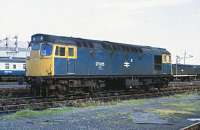
Peter Todd 25/09/1982
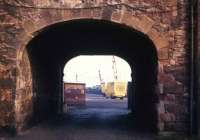
Frank Spaven Collection (Courtesy David Spaven) //
This shed was located to the south of the station. The stone built shed was a roundhouse, entry to the roundhouse being through a triumphal archway (with the watertank concealed above). It was a 34 road shed. The shed opened in 1863 with the opening of the Inverness and Perth Junction Railway which opened a new route to the south, not via Aberdeen but via Forres [2nd] and ...
More details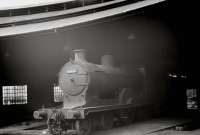
R Sillitto/A Renfrew Collection (Courtesy Bruce McCartney) //1962
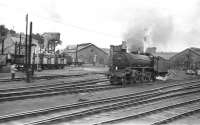
D Walker Collection [Courtesy Bruce McCartney] //1959
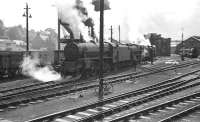
D Welsh Collection [Courtesy Bruce McCartney] //1958
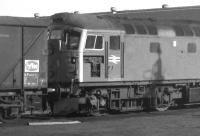
David Spaven //
This was a platform east of Welsh's Bridge, the road bridge crossing the line to approach William Welsh's Millburn House on the north side of the railway. The location was just east of the bridge and, slightly further west, Welsh's Bridge Junction.
...
This signal cabin controlled the junction between the lines to Aberdeen and Perth (to the east) and the approach to Inverness Shed, Inverness Goods yard, Inverness station, Lochgorm Works, bypass to Rose Street Junction, carriage sidings and Millburn Yard.
...
See also
Inverness and Aviemore Direct Railway (Highland Railway)

Aitken Scott //
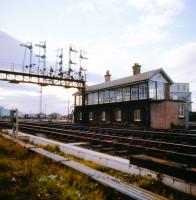
Aitken Scott //
Millburn Yard is a marshalling yard which was laid out in 1943 as a wartime provision during the Second World War, there being insufficient sidings in Inverness. The yard remains in use today. It is located to the east of Inverness station on the north side of the Inverness and Aviemore Direct Railway (Highland Railway). The yard is approached from the east. The yard is an expansion of ...
More details
Caleb Abbott 27/06/2018
This junction is east of Inverness station and is where the routes to Aberdeen and Perth divide. The Perth route initially travels north before swinging over the Aberdeen route to gain some height before turning south.
...
See also
Inverness and Aviemore Direct Railway (Highland Railway)
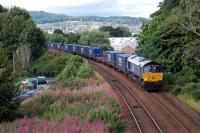
John Clark 19/08/2023
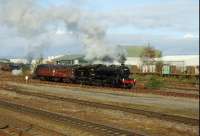
John Gray 12/04/2009
In 1943 a connecting line was laid west from the immediate east side of Raigmore Level Crossing which climbed to reach the Perth line near Millburn Junction and give access to Millburn Yard to the north. The connection was single track.
...

Ewan Crawford //1990

Ewan Crawford //
This level crossing is east of Inverness on the line to Aberdeen. Harbour Road crosses the line on the level. A former crossing keeper's house is north of the line, east of the road.
...

Frank Spaven Collection (Courtesy David Spaven) //1976
This was a two platform station. The station was at Allanfearn, but on opening was the closest station to Culloden, thus the name used until the direct line from Aviemore to Inverness opened in 1898, with its Culloden Moor station.
...
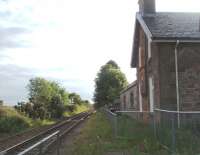
Mark Bartlett 01/07/2011
This is a private level crossing east of the former Allanfearn station. The gates are manually operated. Lower Cullernie is to the immediate south west.
...
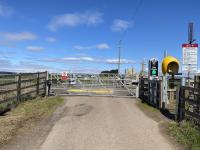
Network Rail /04/2021
This was a private halt built to serve Castle Stuart which was to the north. ...
More details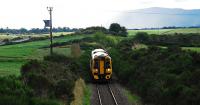
Ewan Crawford 30/09/2009
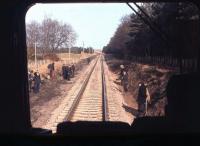
Frank Spaven Collection (Courtesy David Spaven) //
This relatively recent siding, west of Dalcross level crossing was on the south side of the line and ran west into the Highland Forest Products factory. There was a ground frame for the siding. It ceased to be used around 1990 and its site has been built over by an expansion of the factory.
...
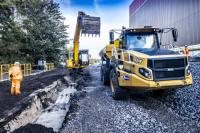
Network Rail /10/2022
The former Dalcross station was south west of today's Inverness Airport. A new station is planned for the airport, but it is unlikely to be built at the original Dalcross station site. Planning permission for a single platform station to the north east, closer to the airport, has lapsed and will probably be replaced with a double track station plan which would be more in keeping with the ...
More details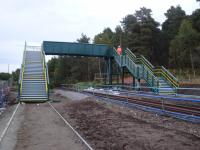
Network Rail /10/2022

Frank Spaven Collection (Courtesy David Spaven) //1965

Ewan Crawford 30/09/2009
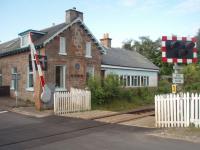
Mark Bartlett 01/07/2011
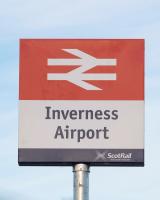
Network Rail /01/2023

...
Network Rail 29/09/2022

John Yellowlees 02/02/2023
This station was largely to the west of an overbridge. It was a three platform station, a reconstruction of Fort George [1st] station, with two main line platforms to the south and a bay to the north for the Fort George [2nd] branch on the north side of the eastbound platform.
...
See also
Fort George Branch (Highland Railway)

Ewan Crawford //
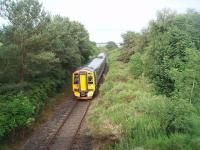
Mark Bartlett 01/07/2011
This was a single platform station largely to the east of a road overbridge. The platform was to the south of the running line.
...
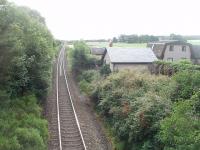
Mark Bartlett 01/07/2011
This was a short lived station north of Kildrummie. Nothing now remains. It was originally named Cawdor, thought was hardly convenient as Cawdor and Cawdor Castle are around 5 miles away with no direct road.
...
This is a two platform station in the south of Nairn. The station buildings on both platforms are similar to those at Pitlochry. The main building, a single storey, is on the eastbound (Aberdeen) platform, on the town side of the station. Thought to be designed by William Roberts and Murdoch Paterson it dates from 1885 and is 'B' listed. The platforms are linked by a lattice ...
More detailsSee also
Inverness and Aberdeen Junction Railway
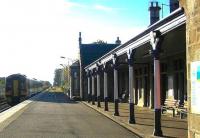
John Furnevel 02/11/2005
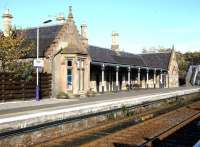
John Furnevel 02/11/2005
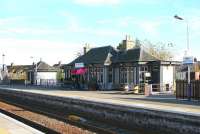
John Furnevel 02/11/2005
Inverness Harbour Branch
Inverness Harbour Branch
This signal cabin controlled the junction between the lines to Aberdeen and Perth (to the east) and the approach to Inverness Shed, Inverness Goods yard, Inverness station, Lochgorm Works, bypass to Rose Street Junction, carriage sidings and Millburn Yard.
...
See also
Inverness and Aviemore Direct Railway (Highland Railway)

Aitken Scott //

Aitken Scott //
The site of the bulk of the Needlefield Carriage Sidings in Inverness is now a container depot. The site is north of Inverness station, and its bypass line, just to the east of Longman Road.
...
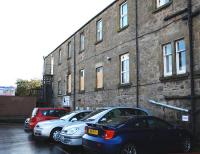
John Gray 31/10/2009
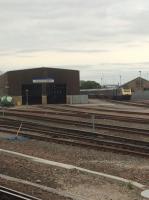
Caleb Abbott 20/08/2018

Brian Forbes 22/9/2007
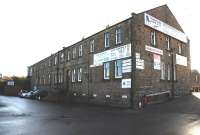
John Gray 31/10/2009
These sidings, in addition to Millburn Yard and the former Needlefield Carriage Sidings, are the goods sidings in Inverness and are located to the north of the station, with access from Longman Road.
...
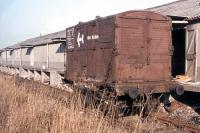
David Spaven //1974
The Lochgorm Works was established by the Inverness and Nairn Railway. The works are to the north of Inverness station and south of the branch to Inverness Harbour (later the station avoiding line) and Needlefield Carriage Sidings.
...
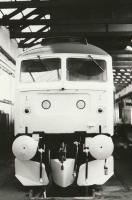
...
Crinan Dunbar 10/04/1982
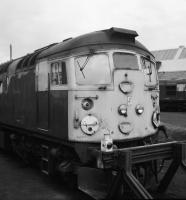
...
Peter Todd 10/05/1982
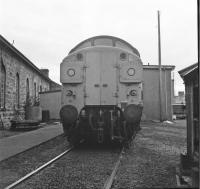
...
Peter Todd 10/05/1982
This junction was formed in 1862 with the opening of the Inverness and Ross-shire Railway as far as Dingwall. The new line connected with the Inverness Harbour branch of the Inverness and Nairn Railway of 1855.
...
See also
Inverness and Ross-shire Railway

Brian Forbes /04/1988
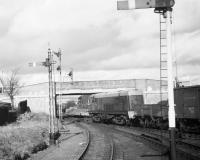
David Murray-Smith 06/04/1960
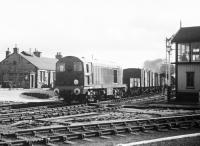
David Murray-Smith 06/04/1960
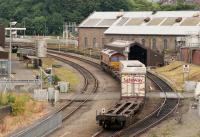
Bill Roberton //2000
A large ammunition depot was established alongside Inverness Harbour during the Great War. The depot was associated with the Grand Fleet based at Scapa Flow.
...
A 3/4 mile branch to Inverness Harbour opened with the Inverness and Nairn Railway in 1855. The branch commenced at Welsh's Bridge Junction where it left the approach to Inverness station to run west to the bank of the River Ness (just south of Cromwell's Fort [Inverness]). The branch ended with a loop and a turnplate serving quayside sidings running north.
...










